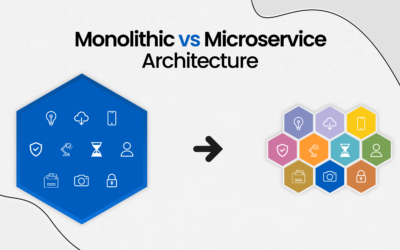Staff Augmentation vs Project Outsourcing – What’s Working!
‘Don’t like reading? Click to Listen’
In today’s time, staff augmentation, outsourcing and its different engagement models are quite the buzzword in the IT service industry. Globalization has impacted the businesses and has encouraged them to hire remotely. Businesses are looking for ways which enhance their operational effectiveness and reduce cost.
An important decision businesses have to make is to decide the best engagement model for themselves. The most common models these days are staff augmentation and outsourcing a project. Although they are quite different yet people tend to mix them up often.
In this article, we will have a look at how the two engagement models work. Analyze the pros and cons of IT staff augmentation services & outsourcing a project. Also, highlight what are the core differences between the two. By the end of this article, you will stand better informed and make the best decision for your business. So let’s delve deeper into their details and see how they work.
What is staff augmentation?
Staff augmentation is when businesses hire specialists from software development companies to fill-in their talent gaps. IT staff augmentation services are frequently rendered by companies to enhance productivity of their current team. The best part is that it’s flexible- either you can do it for a lifetime or for a limited period of time only.
IT staff augmentation services are an easy way to boost scalability and expand your in-house team. It follows a simple process. The client sends in their requirements to the software company. It’s then their job to find the best match either from their own bench or from their talent pool. The resources that are hired from the software development service provider stay on their payroll. But, if you want they may report to you as your own team.
Advantages of staff augmentation
Cost-Effectiveness
Staff Augmentation is time-tested strategy. It’s cost effective as companies do not have to bear additional costs of hiring full-time employees. They only need to pay for the services that are rendered by their business. This helps reduce both short-term and long-term costs of a business.
Hassle-free hiring
Hiring the right talent fit for your company can be a trivial process, especially when the deadlines are pressing. Here, service provider companies pitch in! They simplify things by offering IT staff augmentation services. They get you your tailor-made team of experts in the quickest possible time!
Flexibility
Staff Augmentation is flexible. You can hire extra talent as per your needs. You may simply cut them off once your project is completed. Moreover, you need not augment your staff for the entire project. You may do it for certain specific parts of the project as well.
A plug-into your internal team
The IT professionals are hired by software development companies according to your requirements. But, the professionals quickly gel into the culture of your work environment, work towards shared objectives and report to you directly. However, software company is always there on alert to ensure smooth functioning and thrive to achieve maximum efficiency to build your product.
Access to special skillsets
Staff augmentation gives you access to special resources. Thus, delivering you the required perfection.
Disadvantages of staff augmentation
Contractual Bound
At times, your project may finish before the estimated time. But you are bound to stay in the contract till the mentioned time period.
Getting to know the context
Augmented staff may take their time to understand the context of your project
Training Needs
Augmented staff may require training to get to know your company’s processes and tools in a better way.
Increased Management Overhead
There is an increased pressure on the management as they are responsible for managing the entire team.
What are the types of Staff Augmentation models
Staff augmentation services can be enjoyed in different ways. Let’s have a look at some of the models which are commonly used:
On-Site Approach
In this approach, the augmented staff usually works from the workplace of the hired company. Thus, the hiring company is responsible for providing the infrastructure to the augmented staff in their own workplace.
On-Shore Approach
In an on-shore approach, the company brings in augmented staff from their own country. It’s beneficial as it lets you overcome issues of operating in different time zones, language and cultural barriers etc.
Near-Shore Approach
In a near-shore approach, the company brings in augmented staff from nearby countries. It also offers the same benefits as the on-shore approach. Benefits in terms of overcoming issues of operating in different time zones, language and cultural barriers etc. However, this approach may cost you more than the off-shore approach.
Off-shore Approach
In this approach, augmented staff is hired from different countries. The best part of this is that it’s cost-effective. However, problems such as different time zones, cultural and language differences may occur.
Advantages of outsourcing projects
- Cost Effective
It’s a cost saving strategy. As you do not have to bear the recruitment, training, infrastructure etc. charges as compared to hiring in-house developers.
- Quickly getting the project off the ground
Getting a project started in-house may take time. As, it would require specialized training, additional hiring and acquiring resources. As compared to this, when a project is outsourced, its entire development process is the responsibility of the hired team. Right from the ideation to the maintenance of the product
- Minimized to no-risks!
Software development companies know their work like a boss! Thus, they guarantee to deliver you bug-free, high-quality products. They take responsibility for all the risks attached with your digital creation.
- Offloading stress of the internal team!
When you outsource a project, you offload your team with the added stress. This benefits you as your internal team can give full focus to the core responsibilities of your business.
- Cost structure is directly proportional to the project
With outsourcing a project, you have the added advantage of changes in cost structure. This means that the cost will be according to the nature of the project. As compared to, having fixed cost of hiring permanent human resources.
Disadvantages of outsourcing projects
Coordination issues:
Coordination issues may arise for projects which need to be done collaboratively. Breakdowns may result due to physical separation of teams.
Conflict Barriers
Conflicts may arise between internal and external teams. This may occur as they may not share the same culture, values and priorities.
Less operational control
Clients have less control over the project management and processes.
Different time zones
Differences in time zones may result in lags and delays.
How does outsourcing a project work?
To put it simply, outsourcing a project is when you hire a software development company to completely take charge of your project. In this way, the business itself does not have to worry about preparing work spaces or hiring or managing a team. They are left to focus on their core work only.
Outsourcing a project to a dedicated development team may include services such as marketing, web development or overall software development etc. Also, when you outsource a project, the team is completely exclusive and does not interfere in any of your internal business matters.
What are different outsourcing models?
Outsourcing a project has varied models, let’s briefly take you through some of them:
Time and Material
In this engagement model, the client is solely charged for the time and the resources which are spent on their project. This is mostly better suited for agile development.
Fixed Pricing
After the discovery phase, the client and the software development company scopes out the project thoroughly and quotes a fixed price. As per the name of the model, the price remains fixed throughout. However, the project’s price is revised if the scope is altered and new features are added in by the clients.
Dedicated Team
This model is best suited for clients who have requirements to be fulfilled on and off. They render the services and dedicated resources of the software development company every now and then. Thus, they hire dedicated teams who remain attached with them as per their need.
Cost-Plus
In the discovery phase the software development company and the client pre-determine the cost of the project. After that, the software company adds on their profit to the cost of the project.
Shared Risk/Reward
This is more like a joint venture. In this, both the company and the client are “all-in the game.” They support and stand with each other in both lose and win situation.
Staff augmentation or outsourcing; What may work for your business?
Outsourcing a project is when you delegate the entire project to a third party. The service providers are then responsible for the entire project, right from its ideation to its maintenance. They take care of everything. On the other hand, staff augmentation is when you hire specialist of a certain skillset as a part of your internal team. In this you have complete control over the resources and the operations of the project.
The question that arises now is what is the best pick for your business? Well, the answer to it completely depends on the needs and requirements of your business.
To conclude, let’s have a look at different scenarios that you may experience and see what works best in each one of them.
| Scenarios | Outsourcing | Staff Augmentation |
| Full control over operations is needed | √ | |
| Have well-developed internal processes and team | √ | |
| Want to only fill-in a talent gap | √ | |
| It’s your first time with a project | √ | |
| Do not have any internal processes, well-developed team, resources etc. | √ | |
| Face the issue of talent turn-over/retaining | √ | √ |
| Not well aware of industry’s latest trends | √ | |
| Core responsibilities are top priority and no compromise on them can be tolerated | √ |
Tell Us More About Your Development Projects. Get free consultation from our experts!
 Read Time
Read Time




